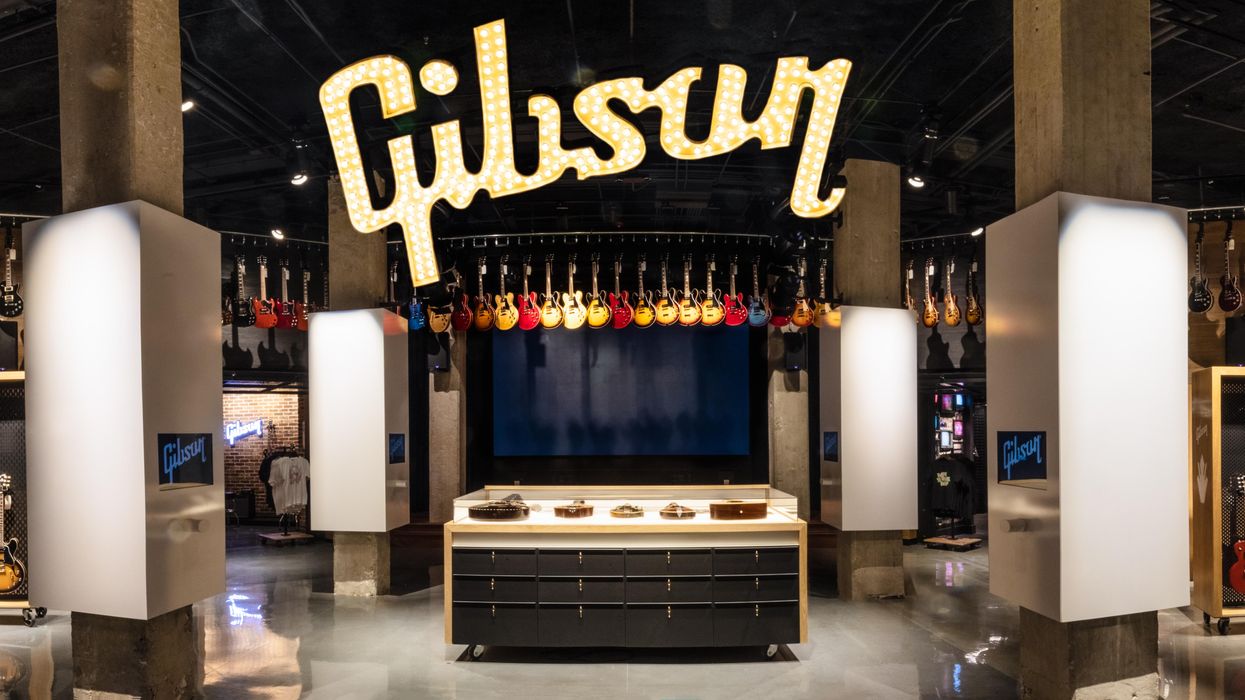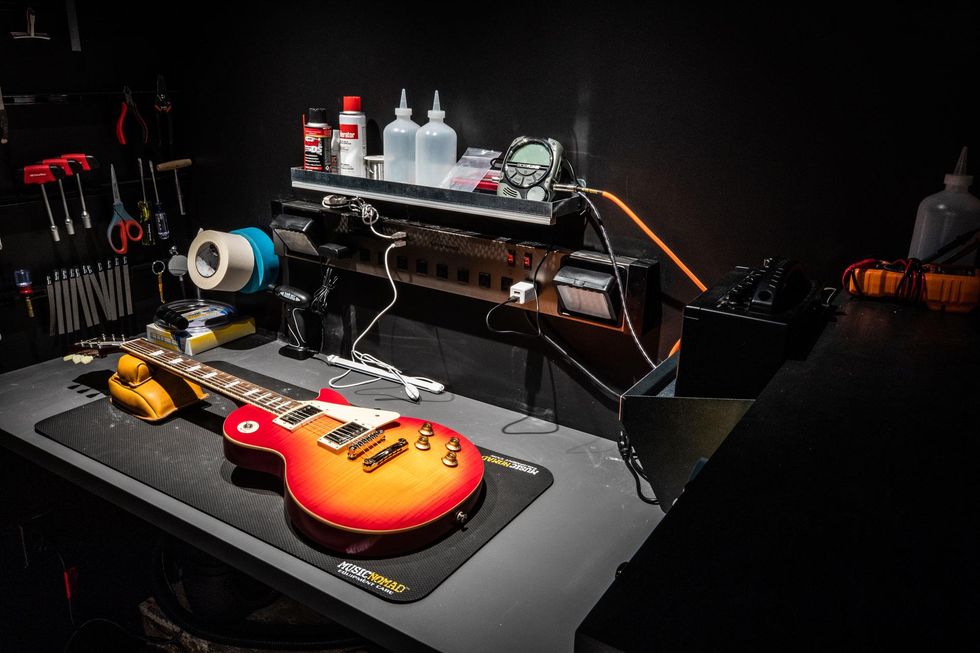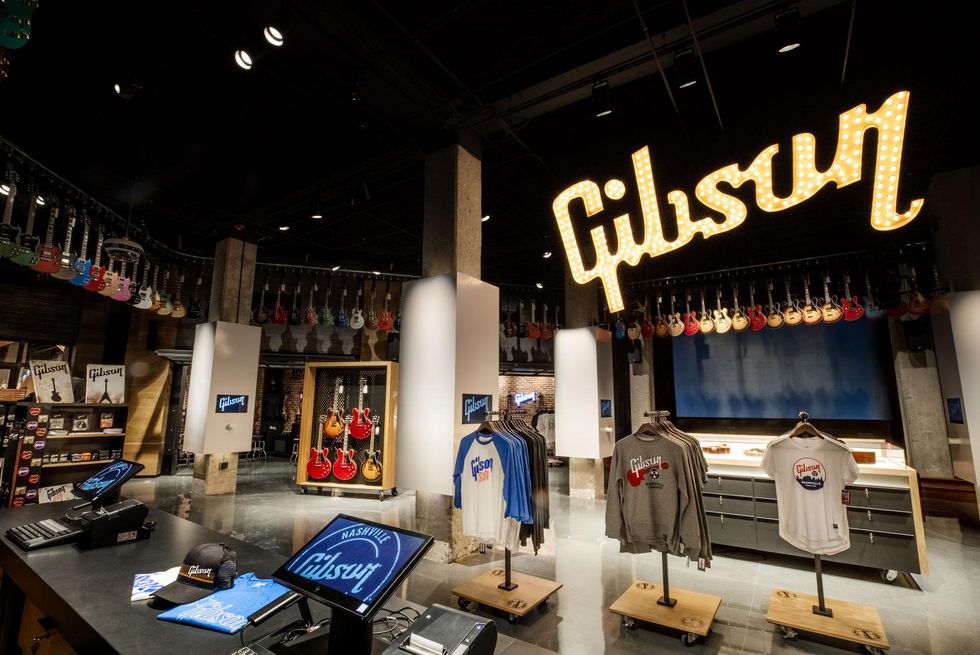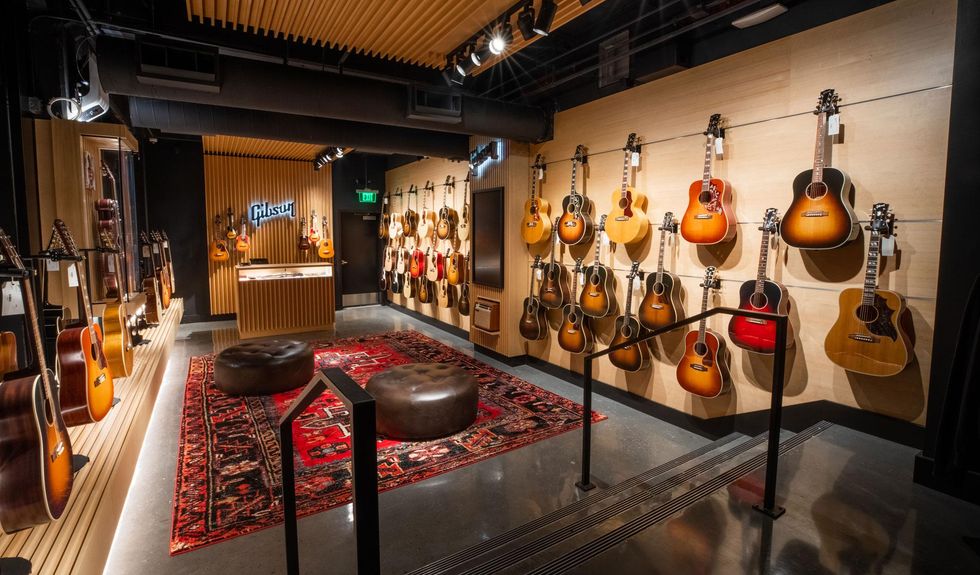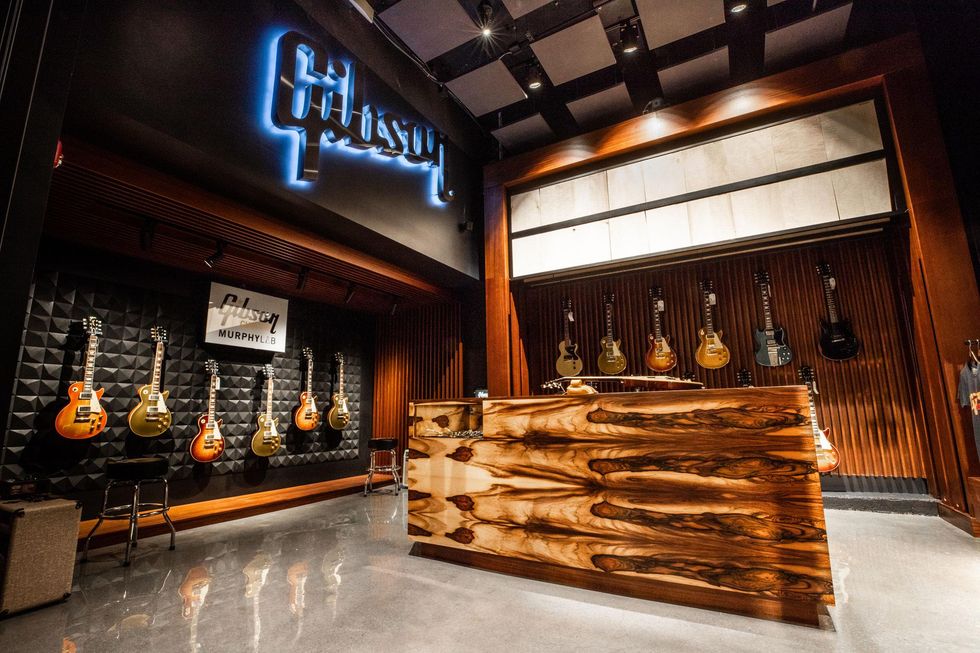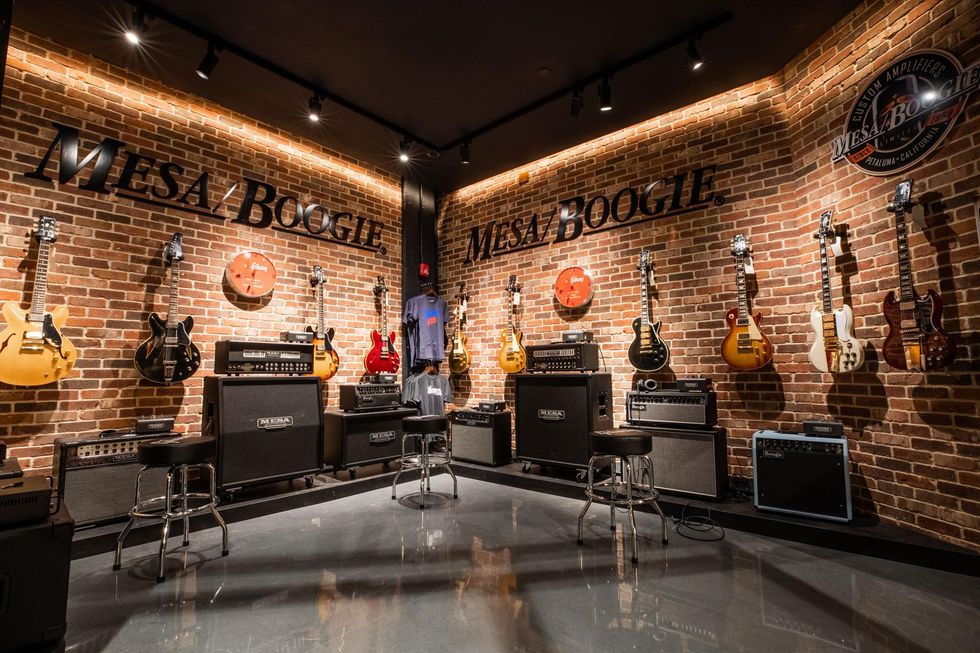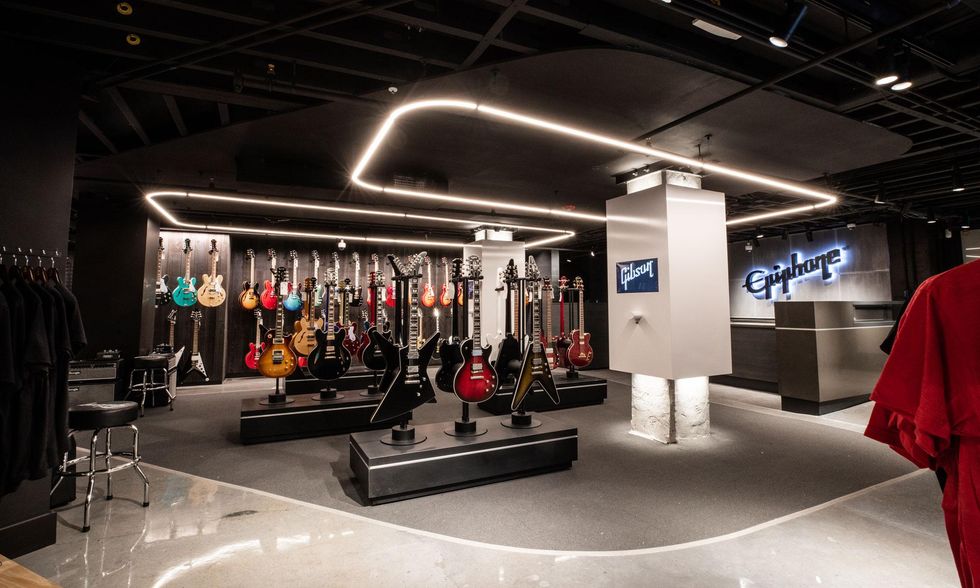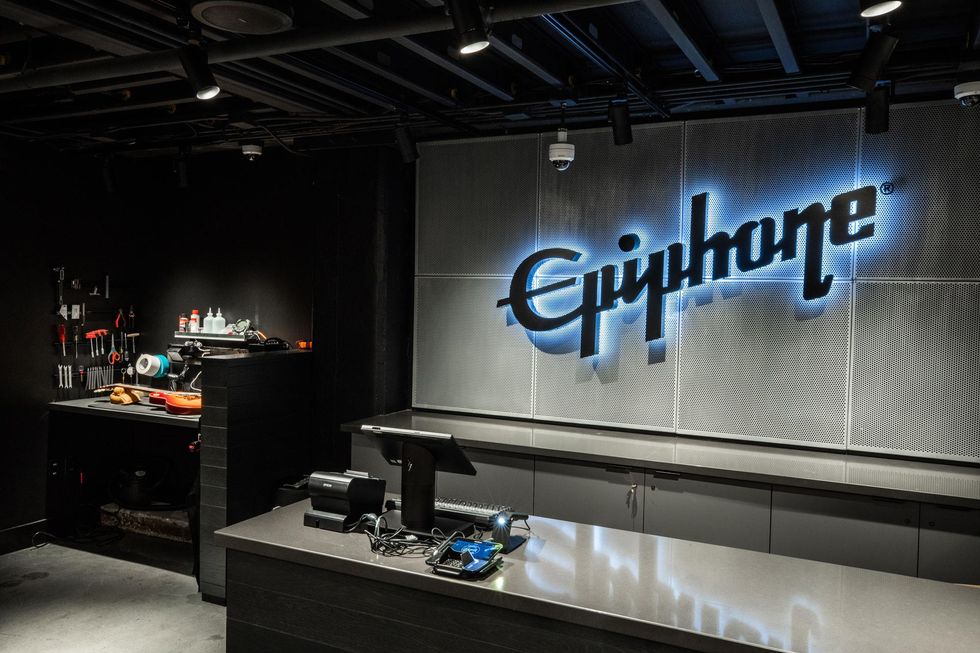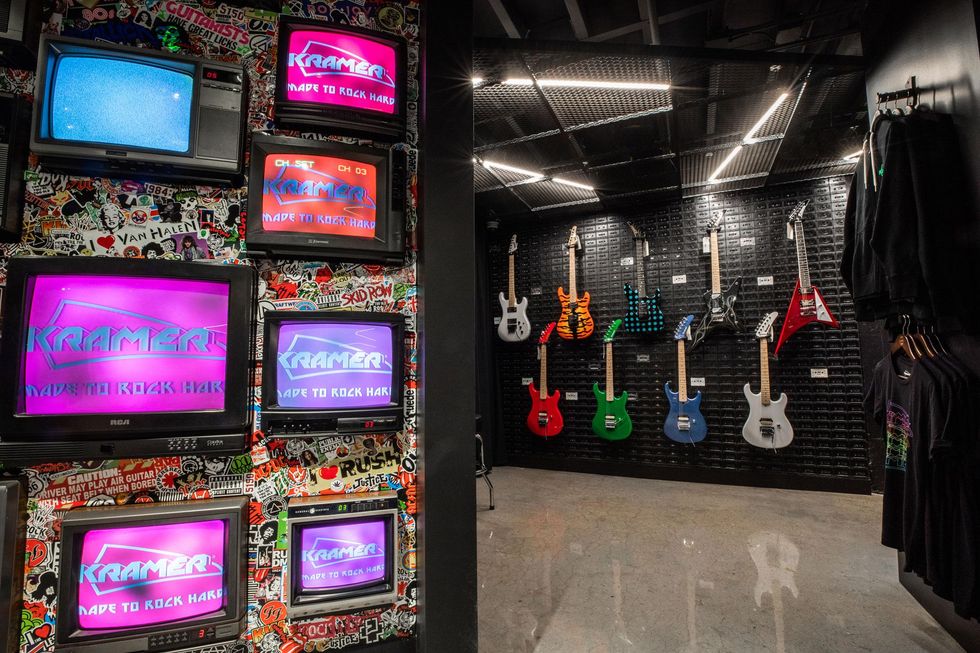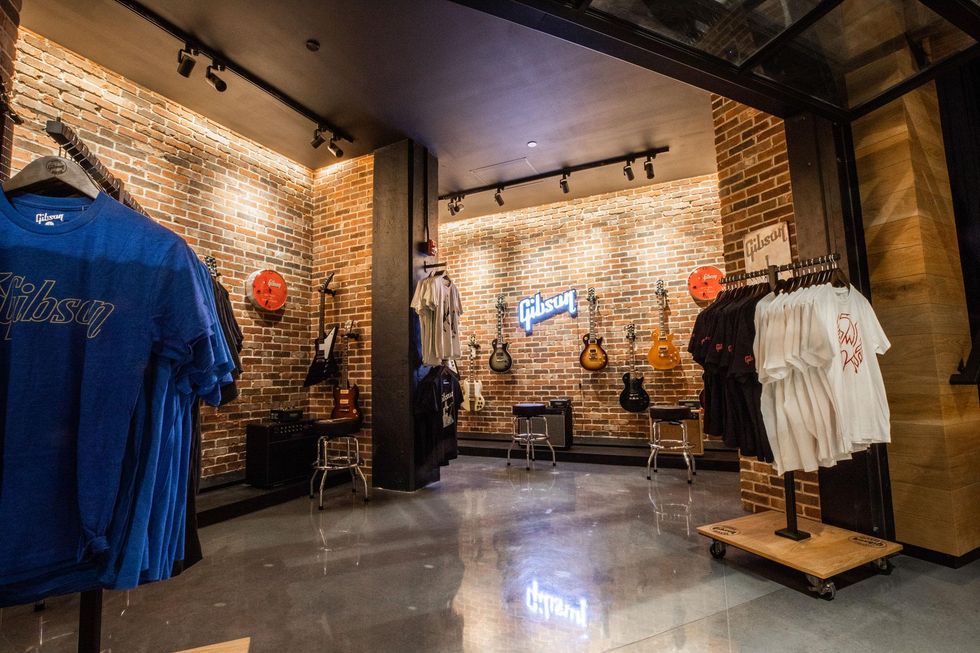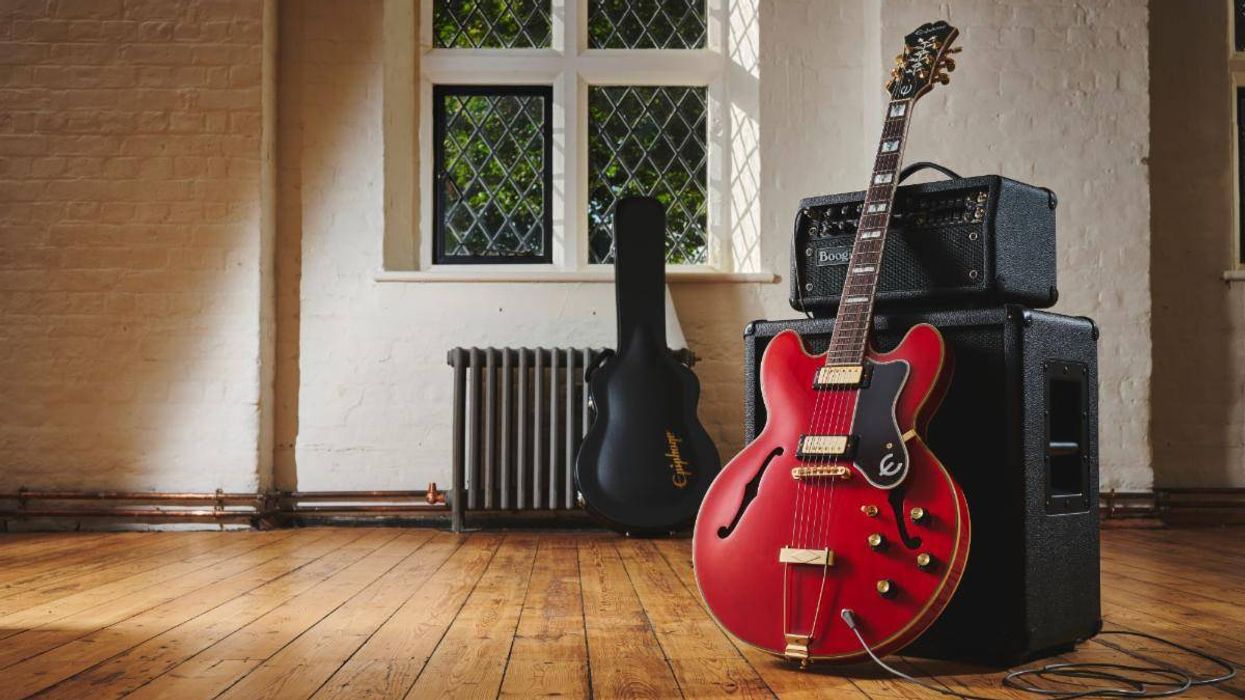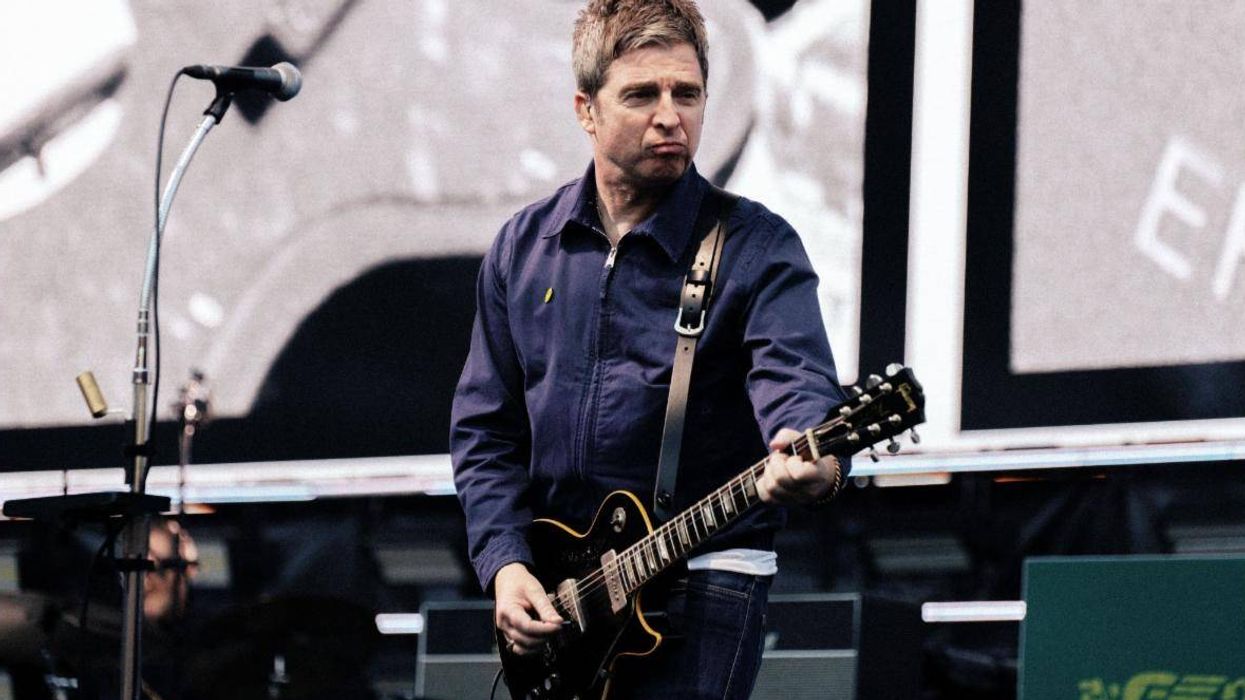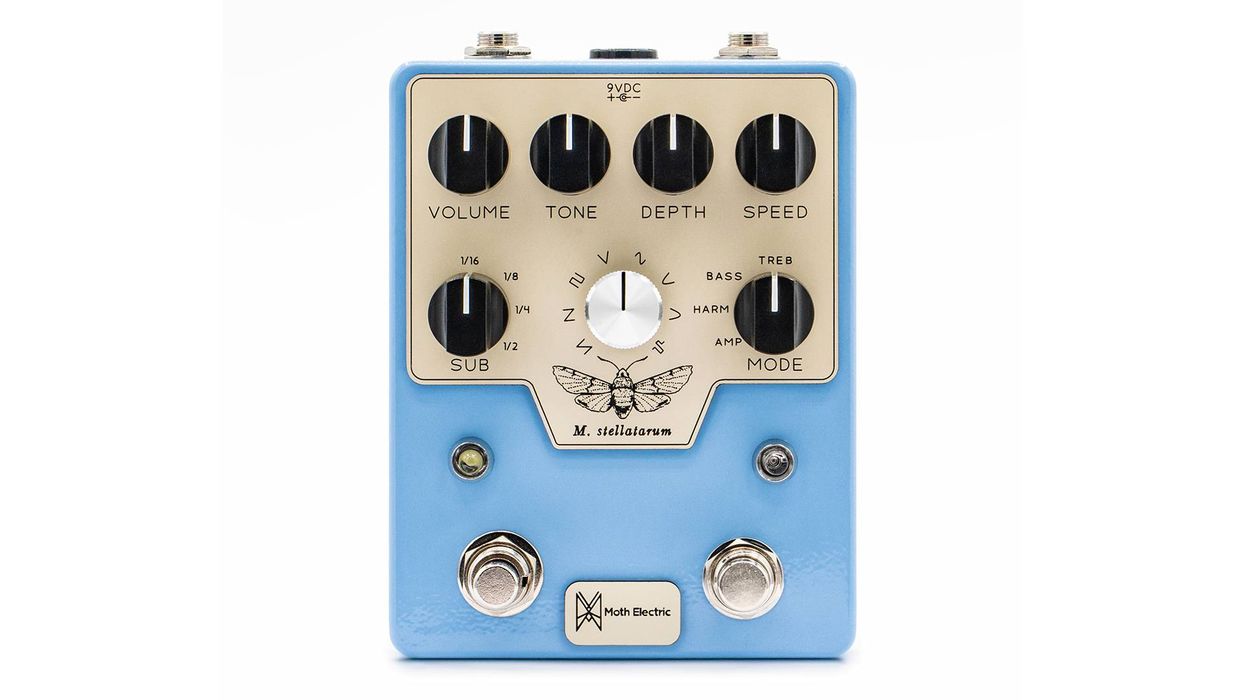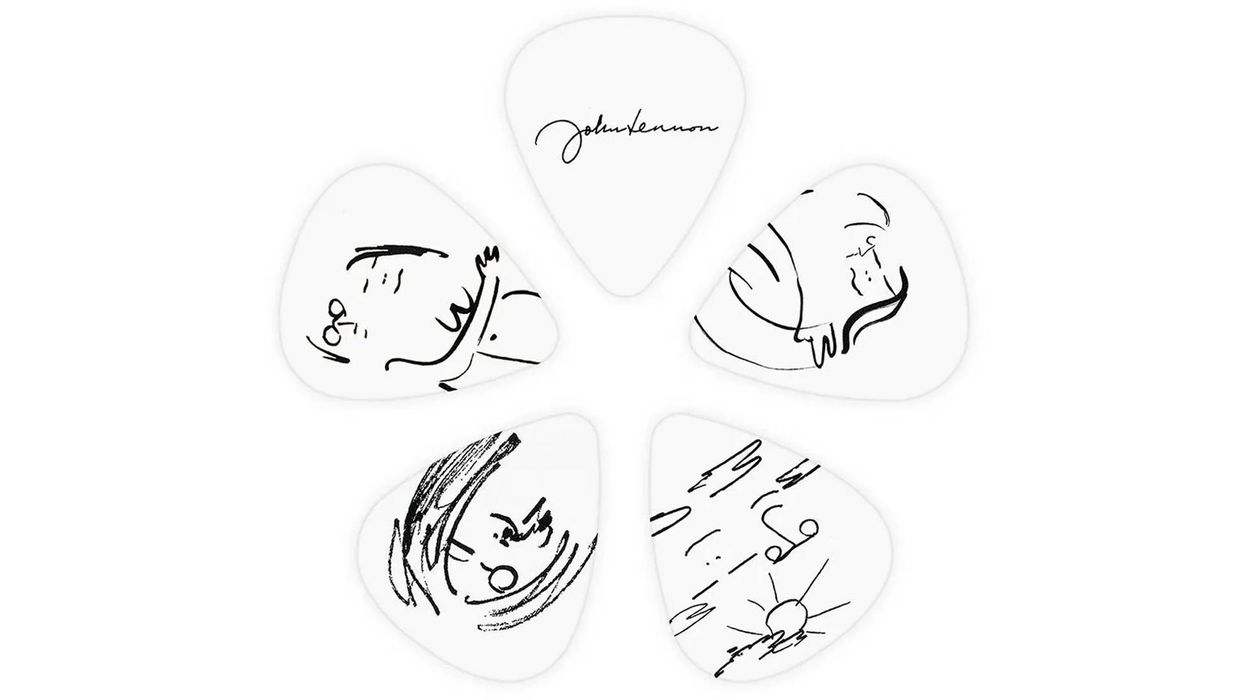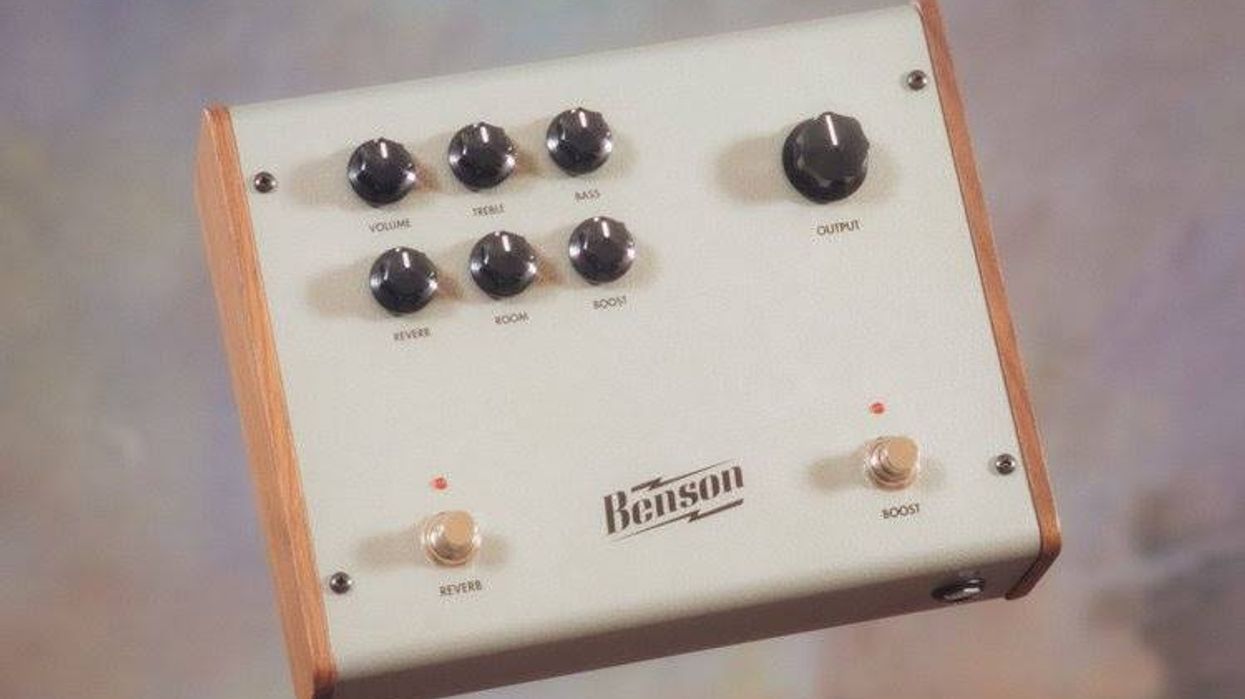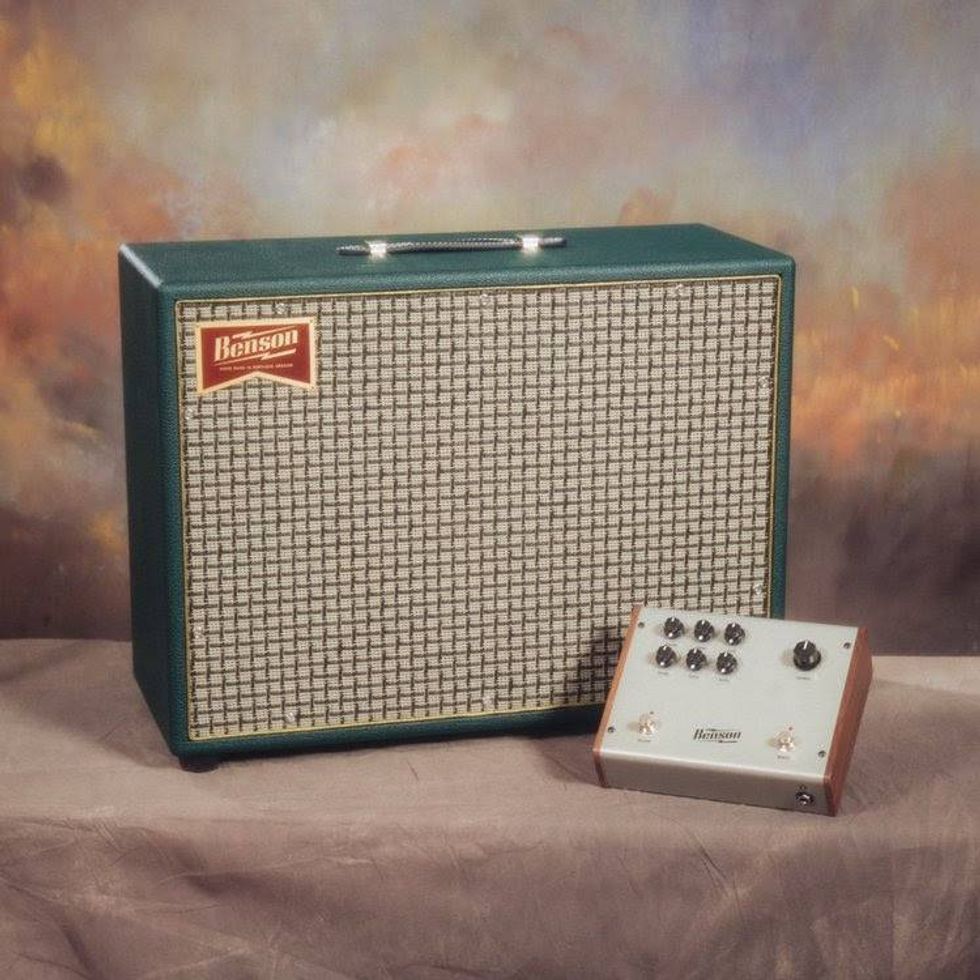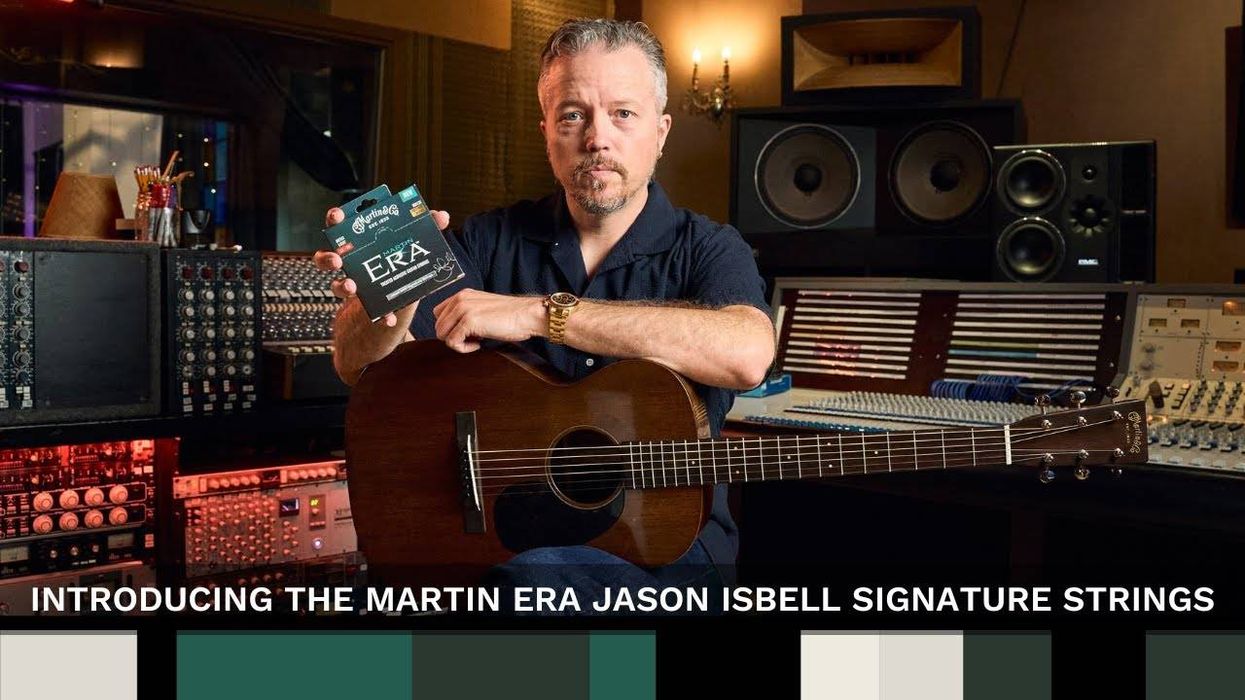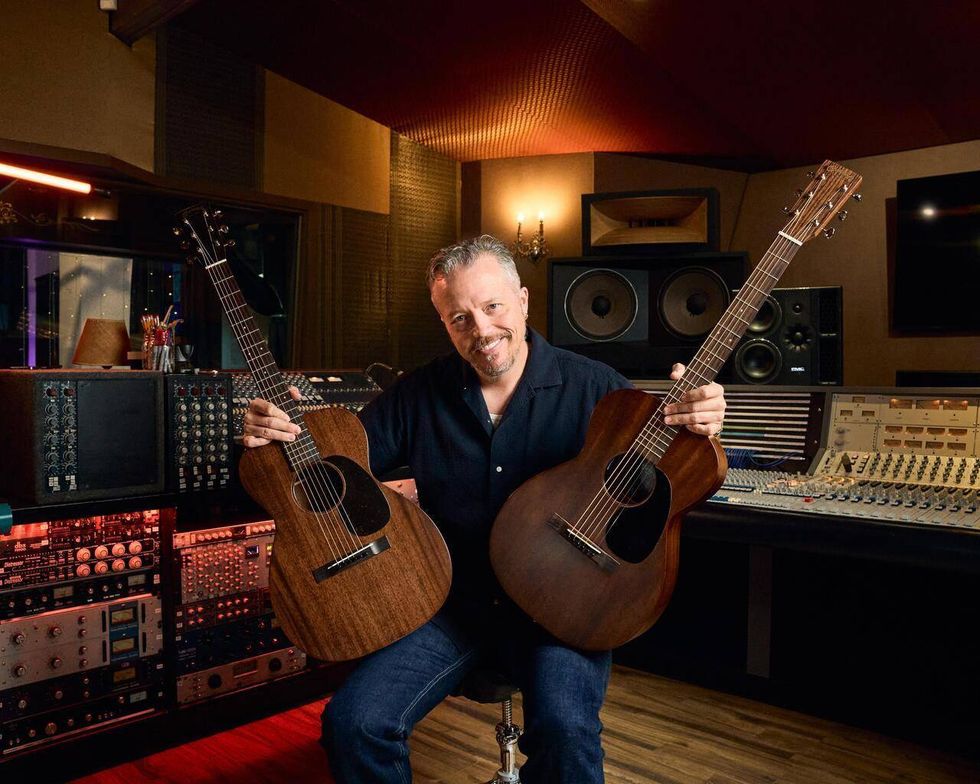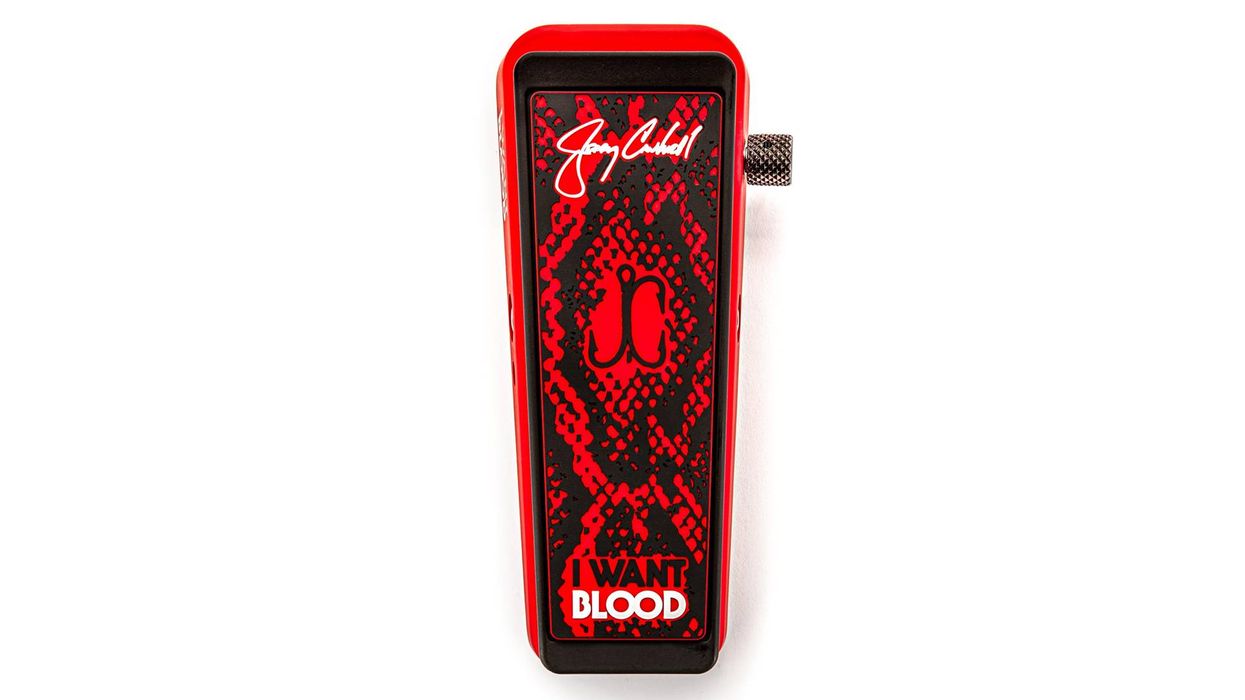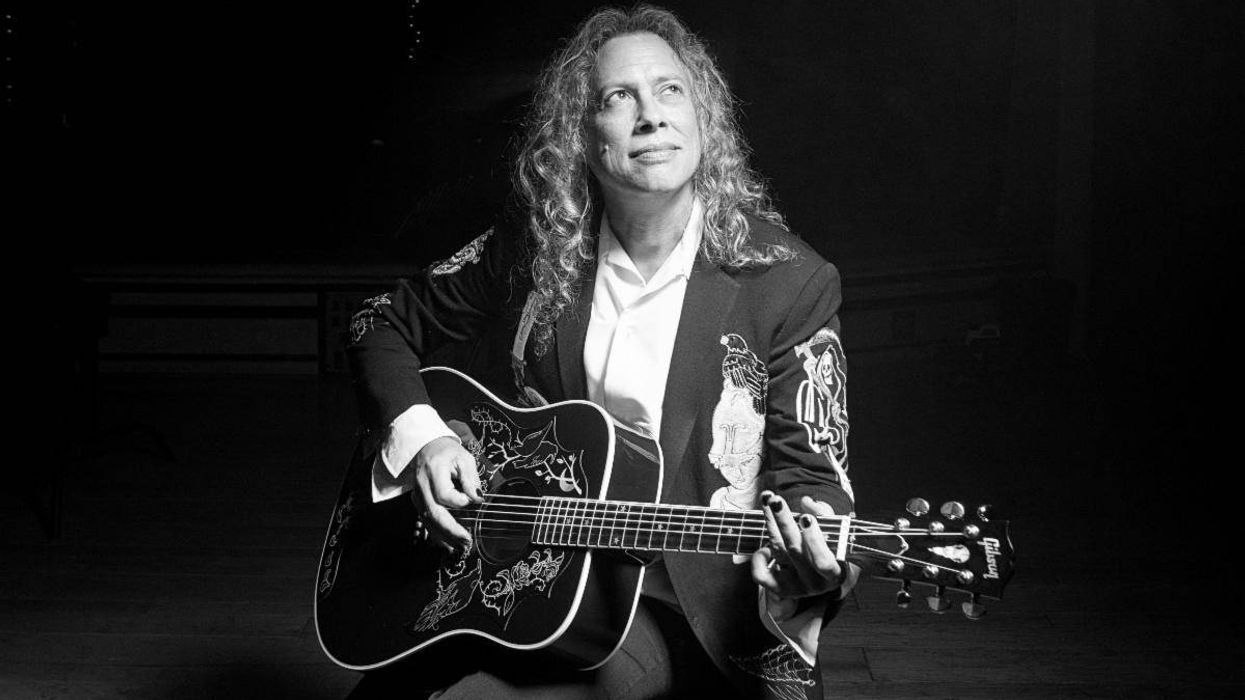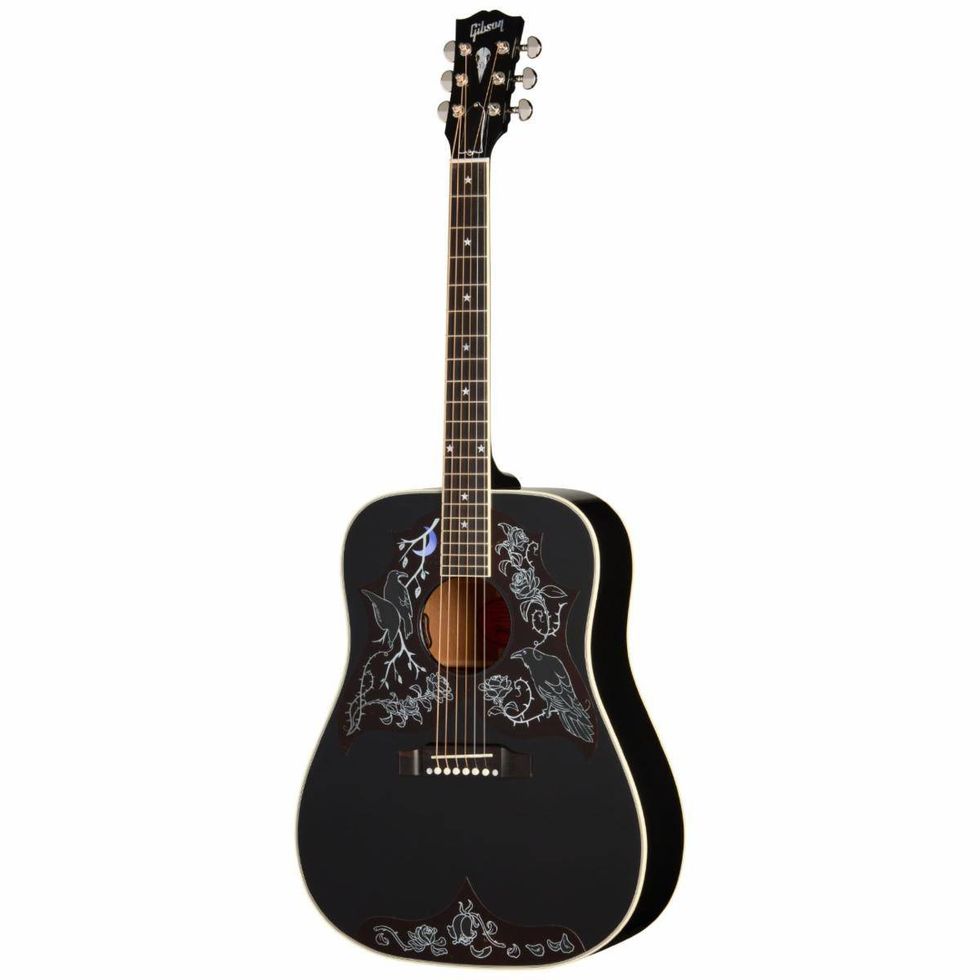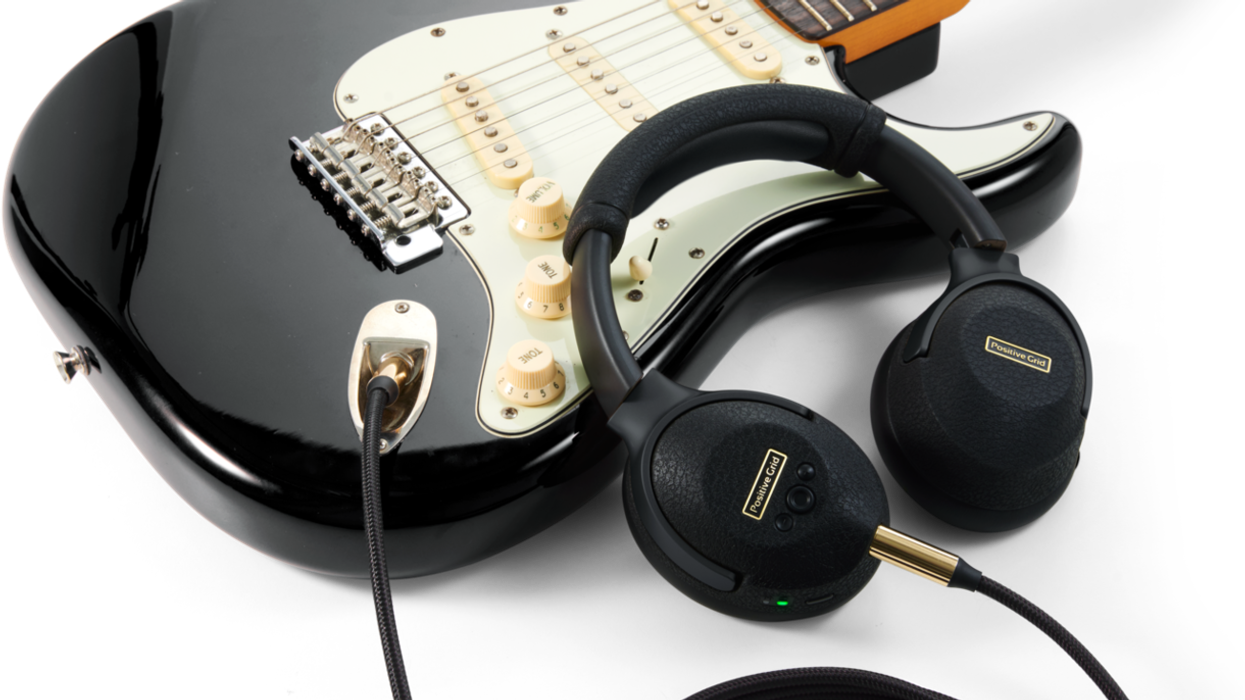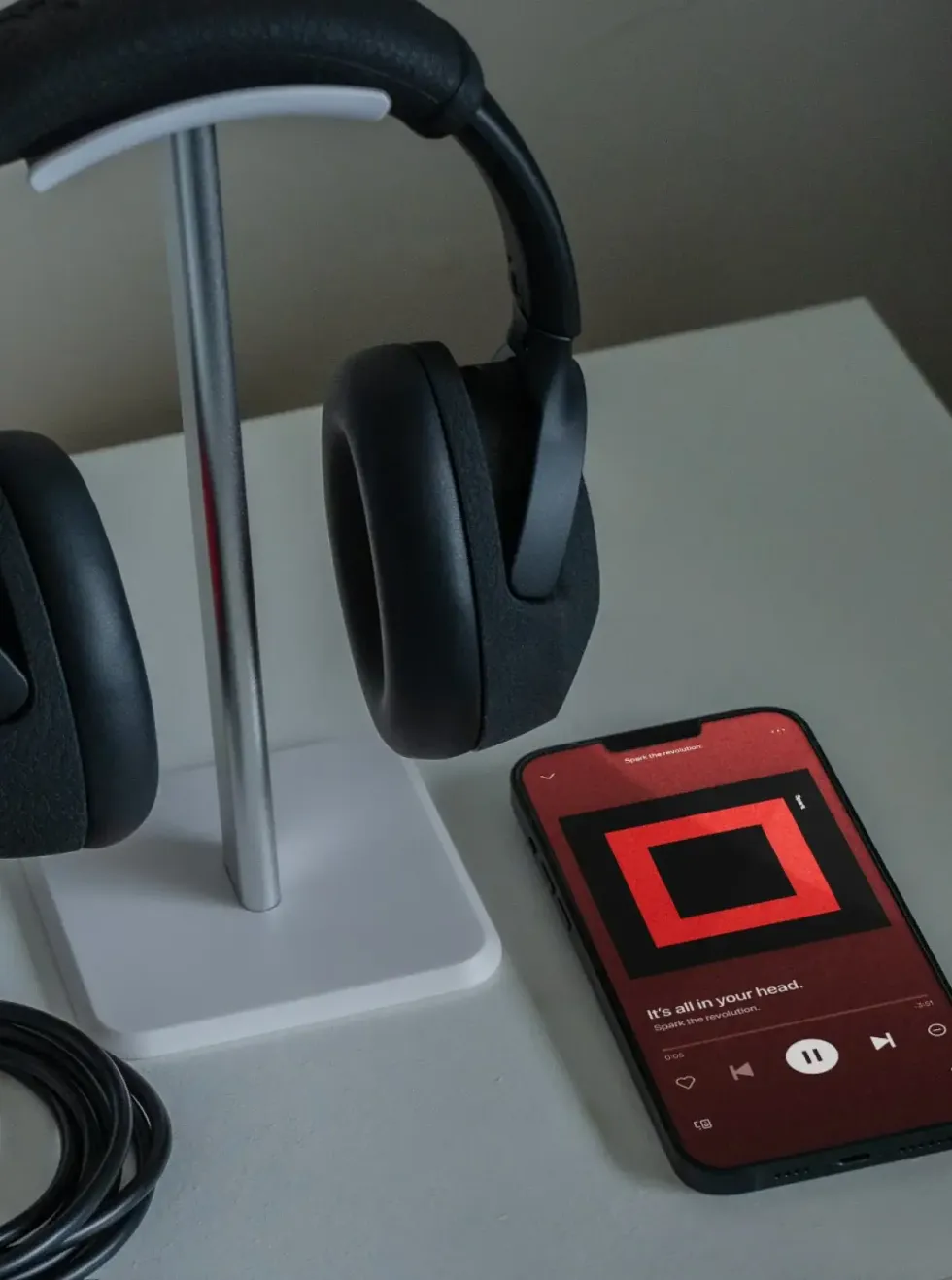Gibson, the iconic, American instrument brand presents the Gibson Garage, the ultimate guitar experience. Come to the Gibson Garage to explore Gibson, Epiphone, Kramer, Mesa Boogie and KRK, try your favorite electric and acoustic guitars, and shop for your favorite guitar, accessories, and surprises.
The historic 8,000 square foot shop will officially open to the public on Wednesday, June 9 at the historic Cummins Station located on 209 10th Avenue South, Nashville, TN in the heart of downtown Nashville. Whether you are a seasoned professional musician, a casual guitar player, a beginner, or simply a music fan, the Gibson Garage is a must-see destination in Nashville.
For 127 years, Gibson has shaped sound across generations and genres and has emerged as the most relevant, played, and loved guitar brand around the world. Step inside the new Gibson Garage to explore and shop the collections, experience exclusive, live music performances, catch a taping of the award-winning Gibson TV series, and explore generations of music history including the stories behind the music with captivating, interactive installations and programming.
"The Gibson Garage is the ultimate guitar experience where our past, present and future comes to life for fans and artists right here in Music City," says James "JC" Curleigh, CEO of Gibson Brands. "This is also our opportunity to contribute to the amazing music and guitar culture that we've been a part of for over a century. We can't wait to share the Gibson Garage with our fans and future fans." "The Gibson Garage is the epitome of when the legendary creativity of the original brand perfectly coincides with the vision of the future of the modern electric and acoustic guitar," adds Joe Bonamassa. "Congratulations on a job well done."
"You can't have a guitar town like Nashville without Gibson representing, and they do it with the Garage in an incredibly thoughtful way," says singer-songwriter-musician Maggie Rose. "The space is great for performances and jamming with other Nashville artists or artists passing through town, but the storefront also draws in music lovers from all over the world who come to see the space that delivers the history and a plethora of guitars."
"The Gibson Garage is a magical place and elicits the same feeling a deep Disney fan feels walking into Disneyland for the first time," says singer-songwriter-producer, Celisse. "To see all those guitars on the belt and you can reach out and play any guitar of your choosing, it is truly unlike anything I have ever experienced. The Gibson Garage is amazing."
The Gibson Garage is the ultimate guitar and music experience, including its state-of-the-art stage for live and virtual livestreaming concert performances. The Gibson Garage combines a modern guitar environment with interactive brand storytelling, a Custom Shop to build your own guitar, historical and celebrity memorabilia displays, a Repair and Restoration Center, and a public retail shopping experience across Gibson, Gibson Acoustic, Gibson Custom Shop, Epiphone, Kramer, MESA/Boogie, and KRK. At the Gibson Garage, fans can try all our guitars across brands and collections as well as take a piece of history home with one-of-a-kind, in-store offers on limited-edition guitars, instruments, gear, accessories, and exclusive Gibson apparel.
Fans across the globe that are unable to visit Nashville can experience the Gibson Garage global grand opening--on Wednesday, June 9--via the global virtual concert "Gibson Live: A Celebration of Artists to Benefit Gibson Gives" airing worldwide at 6:30p CT/7:30 ET via Gibson TV: Here. The concert features performances from Warren Haynes, Margo Price, Kip Moore, James Bay, Sergio Vallin of Maná, Lzzy Hale and Joe Hottinger of Halestorm, Marcus King, Orianthi, Samantha Fish, Morgan Wade, Sadler Vaden, Tak Matsumoto, Celisse, Emily Wolfe, Jared James Nichols with Joe Bonamassa, and more. "Gibson Live …," will benefit Gibson Gives--the 501c3 charitable arm of Gibson--which supports musicians worldwide and is committed to making the world a better place by creating and supporting other non-profit organizations in their efforts to advance musicians, as well as youth-focused education and wellness initiatives. 100% of the "Gibson Live…," donations will go to two powerful organizations making positive changes: MusiCares--a safety net of critical health and welfare services to the music community--and Save the Music--helping kids, schools, and communities discover their full potential through the power of making music.
For the latest news and updates on the Gibson Garage opening, be sure to follow @officialgibsongarage on Instagram or visit the official website at https://www.gibson.com/garage.
